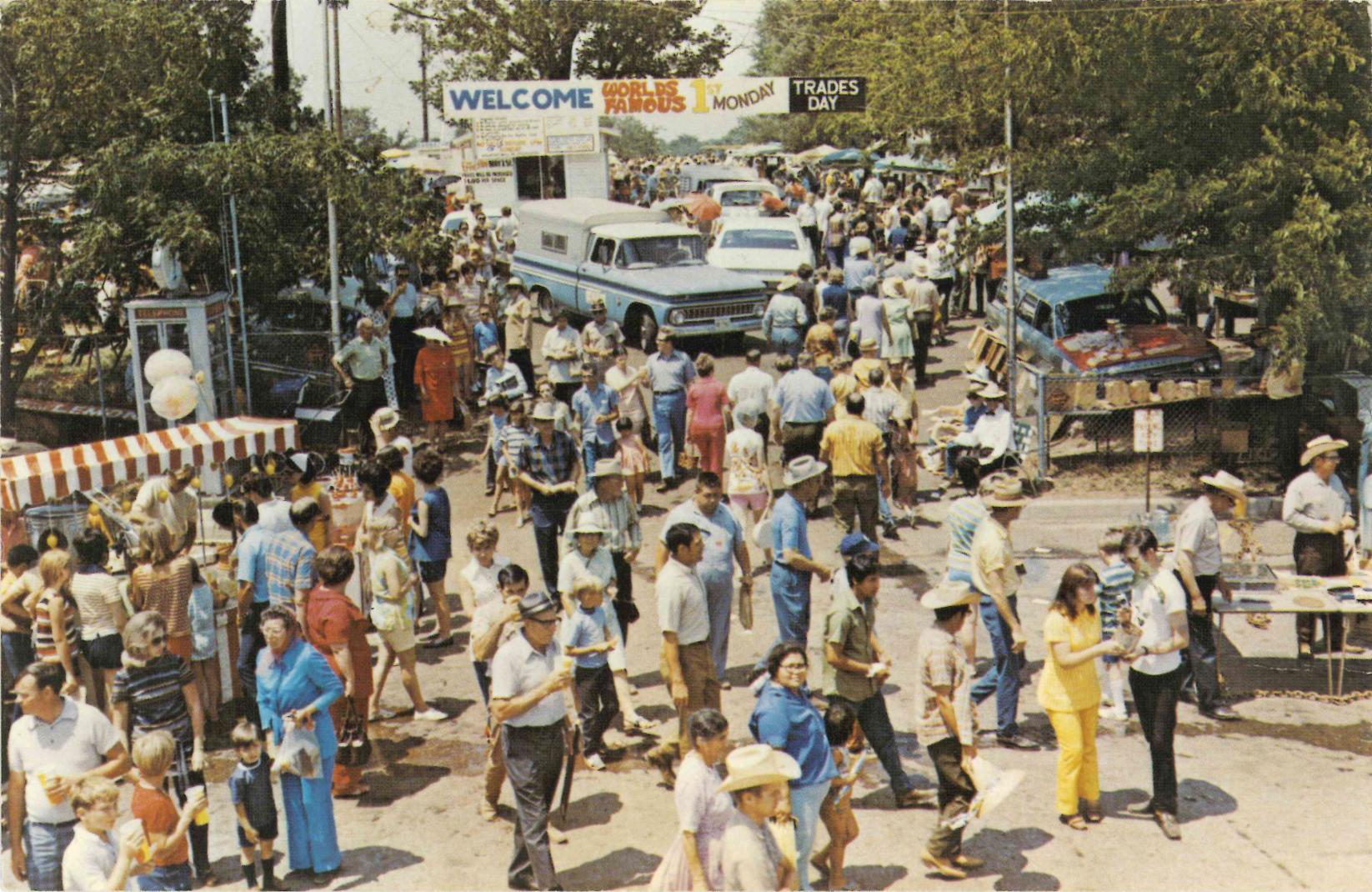
A Slight Miscalculation
Although the City of Canton was not incorporated until 1919, the city was laid out in 1850 when Wood and Rains counties were separated from Van Zandt County and it became necessary to move the county seat nearer to its geographical center. Enoch Tinnin was the surveyor who was sent from Nacogdoches to find a suitable location. Mr. Tinnin selected property approximately two and one-half miles northwest of the present town of Canton. The Commissioners’ Court designated that property as the tract for the town of Canton and sent a surveyor to block the town into blocks and lots. Because maps at that time were imperfect and the country an unmarked wilderness with few bearings, the surveyor started at the east corner of the Jesse Stockwell league instead at the north corner, as was intended. This caused the city to be located on private property instead of on the survey given by Thomas Mills where the town’s patent was originally located.
Thereafter, the Commissioners Court contracted for a courthouse to be built, which was accepted by the Court February 11, 1851, and the county records were moved into the new building. A new jail was also built and a post office opened. On December 8, 1852, a patent to the 320 acres of land was issued by the State of Texas to the Chief Justice of Van Zandt County. In 1853, Enoch Tinnin revisited and pointed out that the surveyor was incorrect in his placement of the town by two and one-half miles. Citizens in the county favored relocating the county seat to the proper site, but the citizens of Canton chose to stay where they were. The Chief Justice of the County, Andrew J. Hunter, approached the individual on whose property the city was located and explained the situation. The owner graciously deeded 160 acres on which the town was located to the county.
This pleased the Canton citizens, but several of those living in the county were bitter and for several years protested the construction of the first brick courthouse on the square. Although the courthouse was built in 1857 and ordered to be torn down due to safety reasons in 1870, the builder was not paid until 1880 because of the controversy surrounding the location of the county seat.
In May 1877, a county-wide election was held to determine whether or not the county seat should be moved to Wills Point. The vote was 705 to 523 in favor of moving the county seat; however, a two-thirds majority was necessary to pass the measure and the election failed. Wills Point contested the results and there ensued a war over which city had the right to be called the county seat.
The Free State of Van Zandt County
There is more than one version regarding how Van Zandt County came to be known as the “Free State of Van Zandt.” One version is, in 1861, 350 county residents attended a mass meeting to protest the separatist actions by the state government. By resolution adopted with a “whoop” they reasoned that if Texas could leave the Union, then Van Zandt County could secede from Texas. Consequently, they proceeded to organize a government until threatened by outside military intervention.
Another version is that in 1848, when Van Zandt County was carved out of part of Henderson County, and Henderson County was heavily in debt. Van Zandt County was created free and clear of any of that debt and was, therefore, a “free state.”
According to the History of Van Zandt County by W.S. Mills, M.N. Crestman of Dallas claimed that in 1867, following the contest of ballots, which sent Texas back into the Union, a convention was held in Van Zandt County where it was declared by the citizens that their county be a free and independent state, free and independent of the State of Texas, Southern Confederacy and the United States of America, and put themselves in a position to fight for their liberty. General Sheridan heard of the “rebellion” and sent a troop of cavalry to quell the right. The men of the Free State used the woods in Van Zandt County to “pot-shot” on the Yankee soldiers to the extent they faded away. Following their victory, the men proceeded to celebrate. In the height of their celebration, Sheridan’s troops came riding from every point and captured the entire army of the Free State. Each prisoner received a pair of anklets safely locked on him. W.A. Allen and Hardy Allen, ex-confederate soldiers) were among the prisoners. W.A. Allen used a knife hidden in his boot to file down the anklets to a point where they could be broken. Once the rainy season came, the posts of the prison could be pushed upon and lifted out and the men escaped.
The Dixie House and Miss Mamie
One of the landmarks in Canton was the Dixie Hotel which was built around 1915 by John R. Kellis and Dr. M.L. Cox. The three-story hotel had some of the best food and lodging in the area. Among some of the most notable guests during the years were Senator Lyndon B. Johnson, Will Rogers, Wiley Post, H.L. Hunt and Bonnie and Clyde. Miss Mamie Maume owned the hotel for approximately forty years. Miss Maume sat at her roll-top desk in the hall to take money for the meals. Crews from the Van oil fields drew hundreds of men and women to Canton during the 1920’s and 1930’s. The hotel was closed upon Mamie Maume’s death in 1955.
